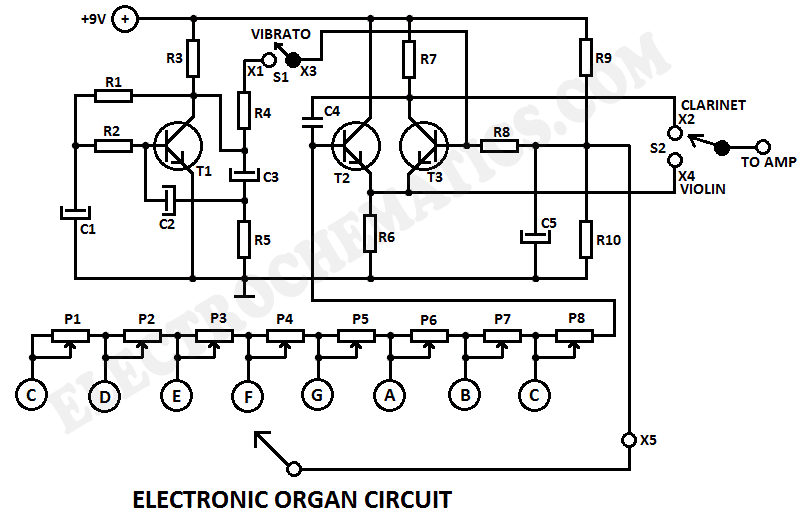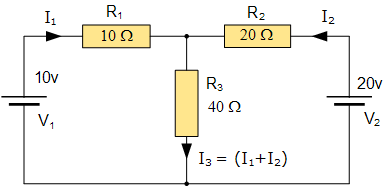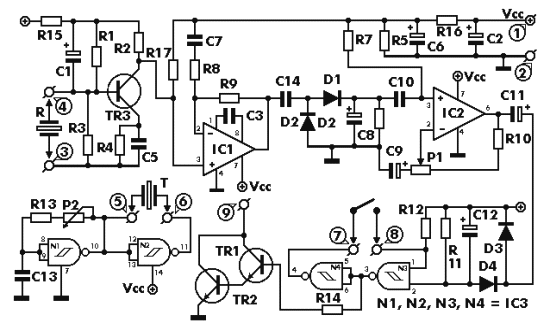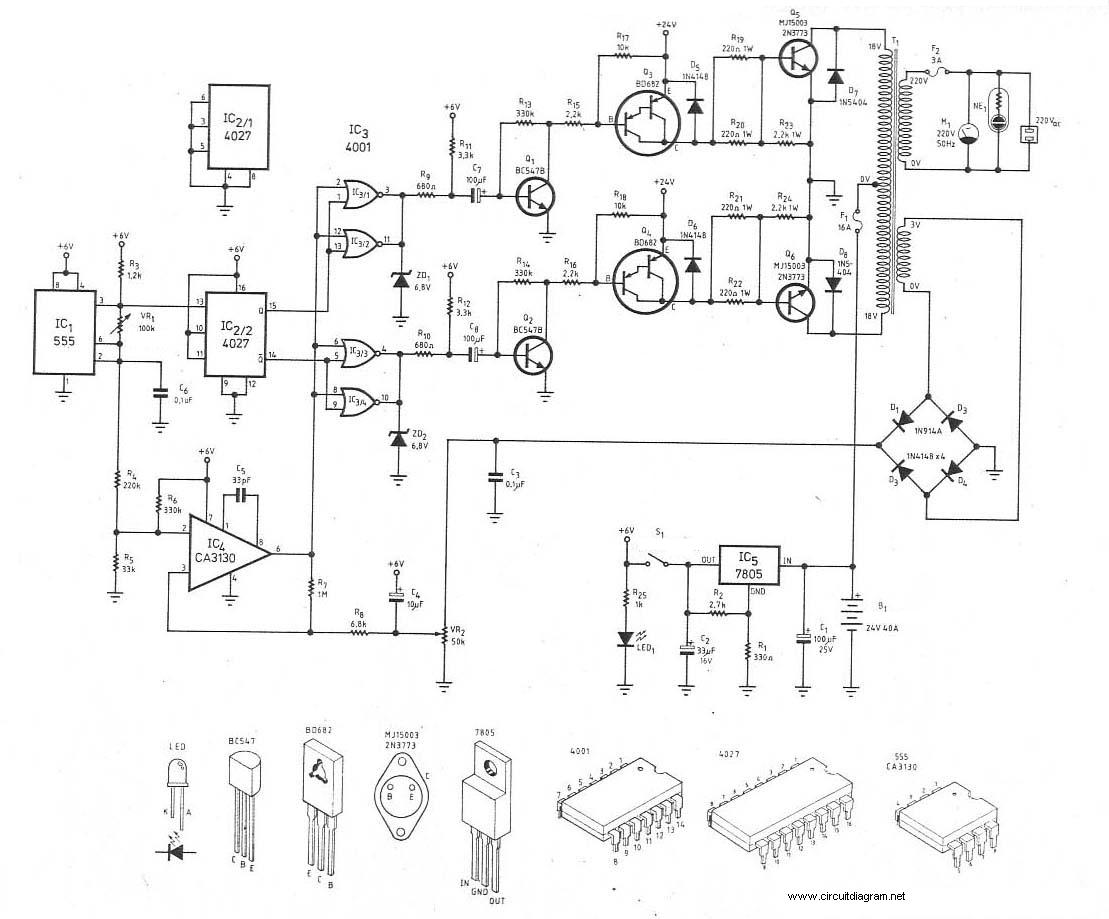
Electronic Organ Circuit

This electronic organ circuit is straightforward to construct and primarily consists of an emitter-coupled oscillator formed by transistors T2 and T3. A square wave voltage can be obtained from the collector of T3 (X2), which imparts a clarinet-like quality to the sound. An additional vibrato effect can be introduced to this fundamental tone via switch S1. The vibrato frequency is approximately 6 Hz, and its amplitude is controlled by resistor R4. The resistance of R4 can range from 100 ohms to 300 kilohms, allowing for experimentation with various values.
The electronic organ circuit utilizes an emitter-coupled oscillator configuration, which is known for its stability and simplicity in generating square wave signals. In this design, transistors T2 and T3 are configured to operate in an oscillator mode, where the feedback from the collector of T3 to the base of T2 ensures continuous oscillation. The output signal, taken from the collector of T3, is characterized by its square wave form, which is essential for creating the desired tone.
To enhance the sound quality, a vibrato effect can be integrated into the circuit. This is achieved through the inclusion of switch S1, which allows the user to enable or disable the vibrato feature. The vibrato effect modulates the pitch of the output signal at a frequency of approximately 6 Hz, providing a richer auditory experience. The amplitude of this vibrato modulation is adjustable through resistor R4, which acts as a variable resistor in the circuit. By selecting different values for R4, ranging from 100 ohms to 300 kilohms, users can tailor the intensity of the vibrato effect to their preference.
Overall, this electronic organ circuit offers a simple yet effective means of generating musical tones with the added flexibility of vibrato modulation, making it suitable for various applications in electronic music production and sound design.This electronic organ circuit is very simple to construct and is basically an emitter-coupled oscillator composed of T2 and T3. An squarewave voltage can be sampled from the collector of T3 (X2). This signal gives a clarinet character to the tone. An additional vibrato signal can be added to this basic sound through switch S1. The frequency of the vibrato is around 6 Hz. Its amplitude is determined by the R4. The value of R4 can vary from 100 up to 300K © but you can experiment with different values. 🔗 External reference
The electronic organ circuit utilizes an emitter-coupled oscillator configuration, which is known for its stability and simplicity in generating square wave signals. In this design, transistors T2 and T3 are configured to operate in an oscillator mode, where the feedback from the collector of T3 to the base of T2 ensures continuous oscillation. The output signal, taken from the collector of T3, is characterized by its square wave form, which is essential for creating the desired tone.
To enhance the sound quality, a vibrato effect can be integrated into the circuit. This is achieved through the inclusion of switch S1, which allows the user to enable or disable the vibrato feature. The vibrato effect modulates the pitch of the output signal at a frequency of approximately 6 Hz, providing a richer auditory experience. The amplitude of this vibrato modulation is adjustable through resistor R4, which acts as a variable resistor in the circuit. By selecting different values for R4, ranging from 100 ohms to 300 kilohms, users can tailor the intensity of the vibrato effect to their preference.
Overall, this electronic organ circuit offers a simple yet effective means of generating musical tones with the added flexibility of vibrato modulation, making it suitable for various applications in electronic music production and sound design.This electronic organ circuit is very simple to construct and is basically an emitter-coupled oscillator composed of T2 and T3. An squarewave voltage can be sampled from the collector of T3 (X2). This signal gives a clarinet character to the tone. An additional vibrato signal can be added to this basic sound through switch S1. The frequency of the vibrato is around 6 Hz. Its amplitude is determined by the R4. The value of R4 can vary from 100 up to 300K © but you can experiment with different values. 🔗 External reference





